Related Research Articles
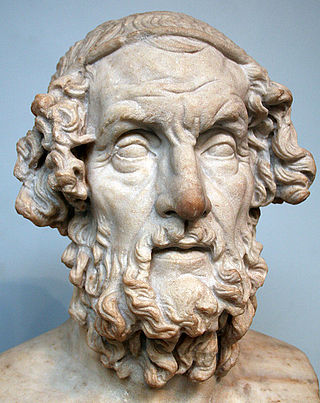
Homer was a Greek poet who is credited as the author of the Iliad and the Odyssey, two epic poems that are foundational works of ancient Greek literature. Homer is considered one of the most revered and influential authors in history.

AD 23 (XXIII) was a common year starting on Friday of the Julian calendar. At the time, it was known as the Year of the Consulship of Pollio and Vetus. The denomination AD 23 for this year has been used since the early medieval period, when the Anno Domini calendar era became the prevalent method in Europe for naming years.
The Pax Romana is a roughly 200-year-long timespan of Roman history which is identified as a period and as a golden age of increased as well as sustained Roman imperialism, relative peace and order, prosperous stability, hegemonial power, and regional expansion, despite several revolts and wars, and continuing competition with Parthia. It is traditionally dated as commencing from the accession of Augustus, founder of the Roman principate, in 27 BC and concluding in 180 AD with the death of Marcus Aurelius, the last of the "Five Good Emperors". Since it was inaugurated by Augustus at the end of the final war of the Roman Republic, it is sometimes also called the Pax Augusta. During this period of about two centuries, the Roman Empire achieved its greatest territorial extent and its population reached a maximum of up to 70 million people. According to Cassius Dio, the dictatorial reign of Commodus, later followed by the Year of the Five Emperors and the Crisis of the Third Century, marked the descent "from a kingdom of gold to one of iron and rust".

Year 1 BC was a common year starting on Friday or Saturday in the Julian calendar and a leap year starting on Thursday in the proleptic Julian calendar. It was also a leap year starting on Saturday in the Proleptic Gregorian calendar. At the time, it was known as the Year of the Consulship of Lentulus and Piso. The denomination 1 BC for this year has been used since the early medieval period when the Anno Domini calendar era became the prevalent method in Europe for naming years. The following year is 1 AD in the widely used Julian calendar, which does not have a "year zero".
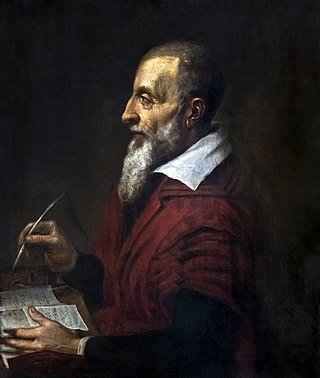
Chronology is the science of arranging events in their order of occurrence in time. Consider, for example, the use of a timeline or sequence of events. It is also "the determination of the actual temporal sequence of past events".
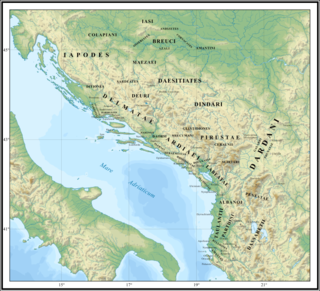
In classical antiquity, Illyria was a region in the western part of the Balkan Peninsula inhabited by numerous tribes of people collectively known as the Illyrians. Illyrians spoke the Illyrian language, an Indo-European language, which in ancient times perhaps also had speakers in some parts of Southern Italy.

The rostra was a large platform built in the city of Rome that stood during the republican and imperial periods. Speakers would stand on the rostra and face the north side of the comitium towards the senate house and deliver orations to those assembled in between. It is often referred to as a suggestus or tribunal, the first form of which dates back to the Roman Kingdom, the Vulcanal.
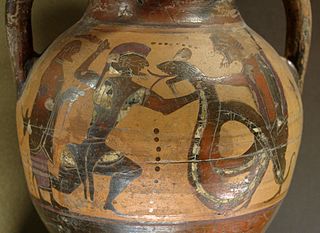
In ancient Greek religion and mythology, the twelve Olympians are the major deities of the Greek pantheon, commonly considered to be Zeus, Hera, Poseidon, Demeter, Athena, Apollo, Artemis, Ares, Hephaestus, Aphrodite, Hermes, and either Hestia or Dionysus. They were called Olympians because, according to tradition, they resided on Mount Olympus.
A chronology of Jesus aims to establish a timeline for the events of the life of Jesus. Scholars have correlated Jewish and Greco-Roman documents and astronomical calendars with the New Testament accounts to estimate dates for the major events in Jesus's life.

Ancient Greek literature is literature written in the Ancient Greek language from the earliest texts until the time of the Byzantine Empire. The earliest surviving works of ancient Greek literature, dating back to the early Archaic period, are the two epic poems the Iliad and the Odyssey, set in an idealized archaic past today identified as having some relation to the Mycenaean era. These two epics, along with the Homeric Hymns and the two poems of Hesiod, Theogony and Works and Days, constituted the major foundations of the Greek literary tradition that would continue into the Classical, Hellenistic, and Roman periods.

The ancient Roman units of measurement were primarily founded on the Hellenic system, which in turn was influenced by the Egyptian system and the Mesopotamian system. The Roman units were comparatively consistent and well documented.
Publius Licinius Crassus was a member of the respected and prominent Crassi branch of the plebeian gens Licinia as well as the father of the famous triumvir Marcus Licinius Crassus. His father was Marcus Licinius Crassus Agelastus and his brother Marcus Licinius Crassus served as a praetor in 107 BC.

Hellenistic philosophy is a time-frame for Western philosophy and Ancient Greek philosophy corresponding to the Hellenistic period. It is purely external and encompasses disparate intellectual content. There is no single philosophical school or current that is either representative or dominating for the period.

The League of the Macedonians was a confederationally-organized commonwealth institution consisting of all Macedonian communities united around a monarch. It can be paralleled from the koinon of the Molossians, but it seems that the Macedonian koinon had far less power than that of the Molossians. The capital, or headquarters, of the Macedonian koinon was the city of Beroia.

Epirus was an ancient Greek kingdom, and later republic, located in the geographical region of Epirus, in north-western Greece and southern Albania. Home to the ancient Epirotes, the state was bordered by the Aetolian League to the south, Ancient Thessaly and Ancient Macedonia to the east, and Illyrian tribes to the north. The Greek king Pyrrhus is known to have made Epirus a powerful state in the Greek realm that was comparable to the likes of Ancient Macedonia and Ancient Rome. Pyrrhus' armies also attempted an assault against the state of Ancient Rome during their unsuccessful campaign in what is now modern-day Italy.

Adramyttium was an ancient city and bishopric in Aeolis, in modern-day Turkey. It was originally located at the head of the Gulf of Adramyttium, at Ören in the Plain of Thebe, 4 kilometres west of the modern town of Burhaniye, but later moved 13 kilometres northeast to its current location and became known as Edremit.
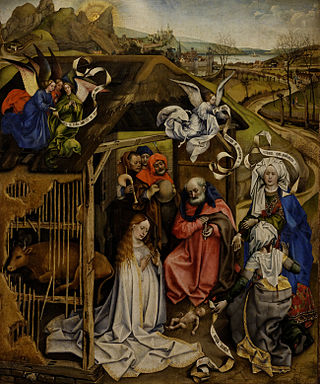
The date of birth of Jesus is not stated in the gospels or in any historical sources but most biblical scholars assume a year of birth between 6 and 4 BC. The historical evidence is too incomplete to allow a definitive dating, but the year is estimated through three different approaches:

Ancient Rhodian coinage refers to the coinage struck by an independent Rhodian polity during Classical and Hellenistic eras. The Rhodians also controlled territory on neighbouring Caria that was known as Rhodian Peraia under the islanders' rule. However, many other eastern Mediterranean states and polities adopted the Rhodian (Chian) monetary standard following Rhodes. Coinage using the standard achieved a wide circulation in the region. Even the Ptolemaic Kingdom, a major Hellenistic state in the eastern Mediterranean, briefly adopted the Rhodian monetary standard.
References
- ↑ "Herodotus, The Histories, Book 5, chapter 108". www.perseus.tufts.edu. Retrieved July 5, 2022.
- ↑ Edwards, Iorwerth Eiddon Stephen; Gadd, Cyril John; Hammond, Nicholas Geoffrey Lemprière; Boardman, John; Lewis, David Malcolm; Walbank, Frank William; Astin, A. E.; Crook, John Anthony; Lintott, Andrew William (1970). The Cambridge Ancient History. Cambridge University Press. p. 485. ISBN 978-0-521-22804-6.
- ↑ Gagarin, Michael (2010). The Oxford encyclopedia of ancient Greece and Rome. Oxford University Press. ISBN 978-0-19-538839-8. OCLC 1323438208.